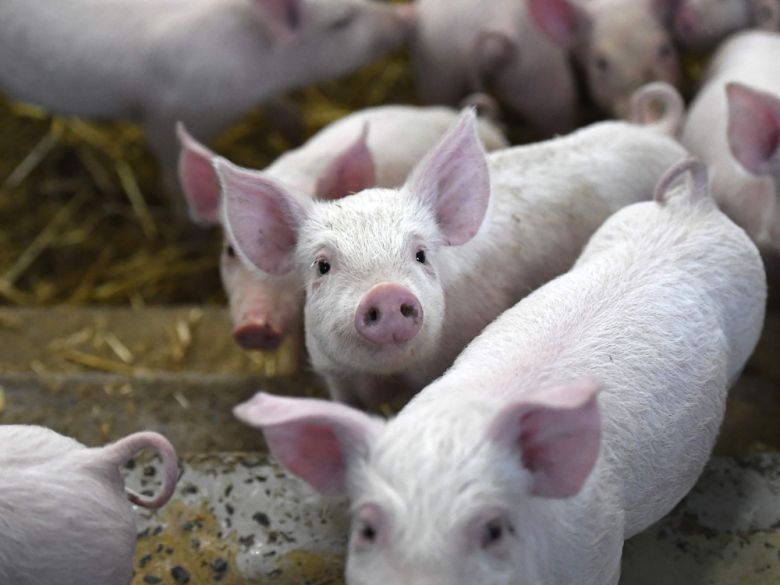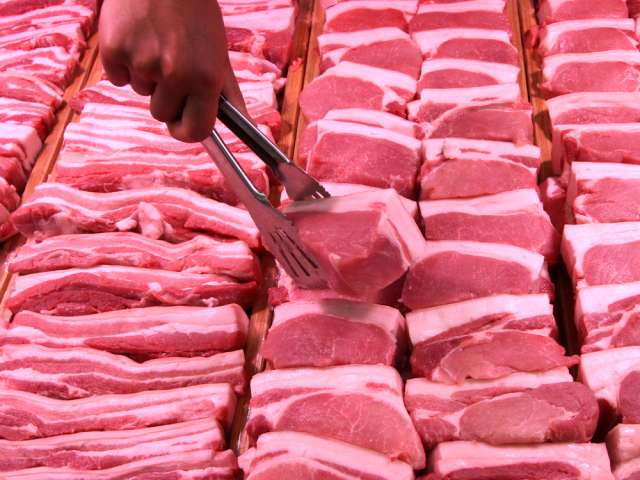Farmers Eye Culling Pigs as U.S. Meat Packing Plants Close Their Doors

Broad shutdowns of major U.S. meat packing plants due to COVID-19 are deepening woes for Canadian pork farmers, choking food supply chains and snuffing out demand for thousands of baby piglets sold across the border each week
by Naomi Powell – Financial Post
Pork slaughtering capacity in the United States has fallen by about 25 per cent after at least 13 abattoirs were forced to temporarily halt operations due to outbreaks of the virus, according to the United Food and Commercial Workers International Union.
Those closures include three of the largest pork processing plants in the country — Smithfield Foods in Sioux Falls, South Dakota, JBS pork processing in Worthington, Minnesota and Tyson Fresh Foods in Waterloo, Iowa — which together represent about 15 per cent of U.S. capacity.
With no room at meat packing plants, thousands of pigs remain on American farms, limiting space and demand for young piglets from Canada.
“If you’re a hog producer, this is easily the most challenging time you have seen in your career”
The parallel crisis in the U.S. is likely to exacerbate any domestic pork shortages and price increases in Canada. Stringer/Reuters files
Indeed, Canadian farmers sell about six million piglets or “feeder pigs” to farmers in the United States every year — about 20 per cent of the country’s total. Delivered to finishing barns at an age of 24 days old or 40 lbs, the piglets are subsequently grown to a weight of about 250 lbs and then slaughtered.Now, problems at the meat packing level have created backups throughout the highly integrated North American supply chain, cratering demand and prices for both live hogs at processing plants and for Canadian piglets at U.S. finishing barns.
“Every day those piglets go on a train to the U.S.,” said Rick Bergmann, a Manitoba pork farmer and chair of the Canadian Pork Council. “But now the finishing barns in the U.S. are jammed up. Farmers down there are telling us ‘if I can’t sell my big pigs how am I going to take your piglets?’”
Bergmann, who typically ships 800 piglets south of the border each week, recently gave a delivery of the animals away for free rather than incur the added cost of keeping them on his farm. With each of the 800 piglets costing $40 to raise, the hit to Bergmann’s bottom line was more than $32,000.
The picture is even darker in the U.S., where discussions have turned to culling herds of animals before they grow too large for slaughter, Bergmann said.
“We’re not there yet, but these are ugly numbers we’re seeing,” he said.
As the spread of coronavirus infections in Canada delays both the delivery of animals into processing plants and the flow of finished pork products to grocery store coolers, the parallel crisis in the U.S. is likely to exacerbate any domestic shortages and price increases here, said Chad Hart, an agricultural economist at Iowa State University.
That’s because, just as Canadian farmers send feeder pigs to the U.S., American farmers send pork products back to Canada, a “rhythm has been messed up by COVID-19 and the closure of plants,” Hart said.
Much of the reduced supply pumped out by U.S. meat packers is expected to be absorbed by the local market, reducing the potential for American meat to backfill any shortages of Canadian pork.
“We are in a weird situation where pork prices will be rising at the grocery store at a time when hog prices are the lowest in a decade and all because of a pinch point at the processing plants,” he said. “If you’re a hog producer, this is easily the most challenging time you have seen in your career.”
In a full-page advertisement in the New York Times on Sunday, Tyson Foods Inc.’s board chairman John Tyson warned that “millions of pounds of meat” will disappear from the supply chain as the pandemic forces processing plants to close, leading to product shortages in grocery stores.
“The food supply chain is breaking,” Tyson wrote. “Millions of animals — chickens, pigs and cattle — will be depopulated because of the closure of our processing facilities.”
A cruel twist for farmers is that the bottleneck in processing arrived at a time when global demand for pork exports soared following an outbreak of African swine fever that eliminated half of China’s domestic herd — sending the country on a global hunt for protein.
Canada was expected to benefit from that rise in demand after Beijing lifted a temporary ban on Canadian meat in January. Pork exports to China rose 46.4 per cent in February (before the COVID-19 virus swept through North America) compared to the same month a year ago, according to the Canadian Pork Council. March figures are not yet available.
“This is not a demand problem, it’s a supply chain problem,” Hart said.
But with social distancing and other procedures to protect against COVID-19 likely to be required for some time, jumping on that demand will likely remain a challenge.
“One reason the North American industry is so efficient is we can produce a lot of meat in a short amount of time,” said Hart. “To do that you need a lot of employees working very closely together. So the same characteristics that make our industry efficient are also what this virus preys upon.”
Originally published in the Financial Post













